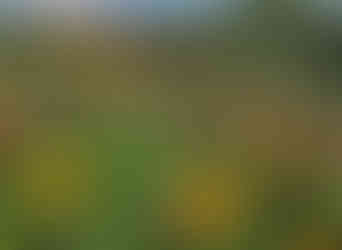September 26- October 5
- Rosa
- Oct 6, 2019
- 3 min read

Hibiscus Harvest
Now that our hibiscus are blooming, we harvest baskets of fruit every other day. Though nowhere near as spiny as okra, the green bases occasionally prickle bare fingers. Our plants grew to ambitious heights and are paying for their hubris, their long branches leaning earthward. At least we can reach the fruit on top.
We shuck the red calyxes from the green seed pods, and then dry the calyxes. The dehydrated calyxes can be stored for months and steeped for tart tea. I like to throw in a little lemongrass to compliment the hibiscus flavor.
Drying Celosia
Another crop ready for harvest is our celosia. Each bed of celosia yielded unique flower forms. One bed set by far the largest coral-like flowers of all. Many of them were variegated pink, yellow, and peach. Because the flower heads aren't made of thin, fleshy petals, they dry very well.
We strung up bundles and hung them on the porch for an hour or two to let the bugs wander off. Then we moved them inside to a cool, dark corner. Hanging flowers ensures that they dry into the correct position. (Flowers droop downward as they dry, which makes flowers dried upright look strange.) I also gathered bundles of goldenrod, which dries well, too. In fall and winter, these flowers will make welcome bouquets.
Flower Friends
The last flush of fall blooms has heralded in a wave of butterflies. I'm no entomologist, but I've easily counted 9 species of butterfly all from one position in the garden. The sulfur butterflies seem partial to the hibiscus, and flutter in droves from flower to flower. I've even seen a few monarchs, but they only seem to pass by and I've not managed to get a picture. They are migrating south and have a long way to go.
Other insects accompany the butterflies. Even the ones that damage our plants have intricate little lives. I discovered what I call a leaf-footed bug emerging from its old skin, freshly pink. Our honeybees show up occasionally to explore the flower beds, though they are largely harvesting the goldenrod now. Spiders abound, including the delightful little jumping spiders, which I often find pinging about on my arms while I clear beds. In the celosia, a camouflaged white spider glared crab-like from the flower folds. I did my best to transfer it to a properly colored flower when I harvested its house.
Setting Seeds for Spring
Early fall is the time of year for sowing plants that need the winter to grow. The window of time to get the seeds in the ground is relatively narrow, since they need time to get established before the first frosts, but won't survive summer temperatures.
So, this last week we've begun filling the prepared beds with flower seeds. Snapdragons, Queen Anne's Lace, poppies, and love-in-a-mist have all gone in. They'll germinate in a couple weeks (hopefully) and with the help of row covers, they'll keep growing throughout winter, especially expanding their roots. This will give them a head start when the weather warms, and allow them to bloom even earlier in the spring. This is our first season beginning flowers the fall before, and it is both wonderful and worrying. Our zinnias aren't even done blooming, but the tiny seeds we are planting now will live through the long, cold, winter and greet us with the first colors of spring.
Final Fireworks
Though we are planning for the future, there are still many things to appreciate in our garden now. The second generation of zinnias has been setting new colors that their predecessors never did. Our purple peppers are still in full stride, sweet and crisp. The last few harvests of okra have been roasted with olive oil and sea salt and still taste like summer. Lima beans are on their way, a new crop in our garden but a favorite food in our house, and a welcome thing to look forward to as fall settles in.
























































Comments